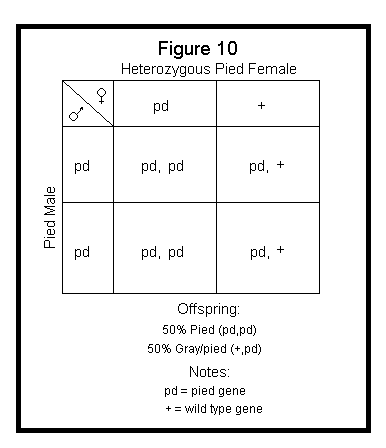
The next category of chromosomes to be discussed is the autosomes. As previously mentioned, autosomes are all the chromosomes that are not sex chromosomes. In the fertilized egg, autosomes occur in pairs. As previously mentioned, these pairs are referred to as homologues. Some of the autosomal genes for coloration and pattern in cockatiels include:
|
| ||
Since autosomes occur in pairs containing equal numbers of genes, regardless of sex, there will always be at least two alleles present for a trait. The hemizygous condition does not apply to autosomes (exception being a deletion mutation that survives). You will notice that most of the mutations are recessive. Therefore, in order for the recessive mutation to be expressed, it must occur on both homologous chromosomes - the homozygous recessive condition. If the mutation is recessive and only occurs on one homologous chromosome, while the wild-type gene resides on the other homologue, then this is a heterozygous condition and the wild-type phenotype will be displayed.
Figure 10 shows a cross between a Pied Male (pd,pd) and a Gray heterozygous for Pied Female (+,pd). The offspring from this cross will be 50% Pied (pd,pd) and 50% Gray heterozygous for Pied (+,pd). Obviously, half of each will be males and females.


